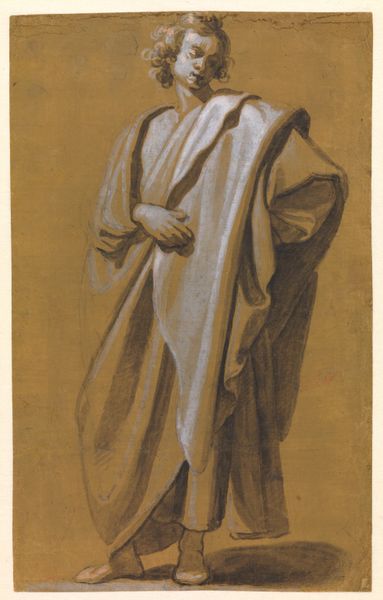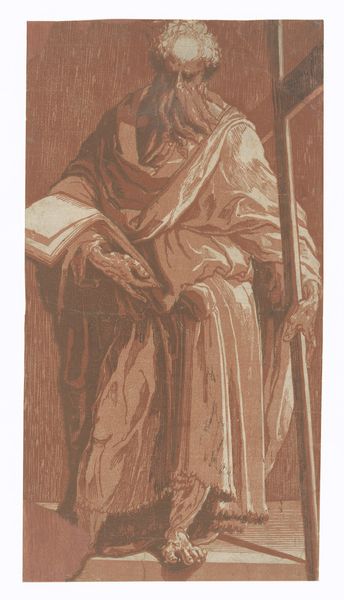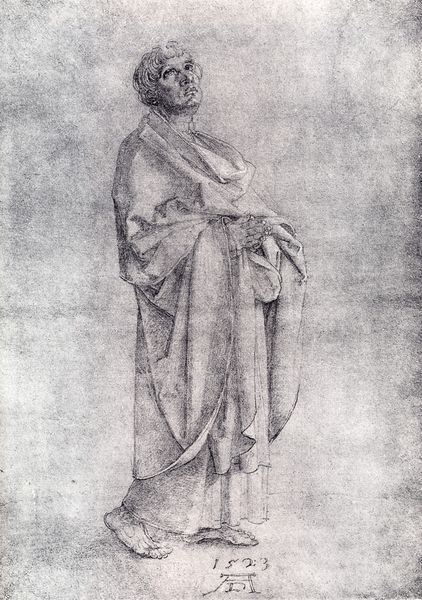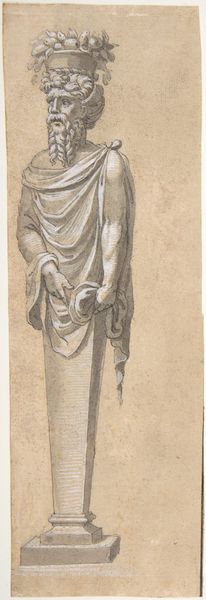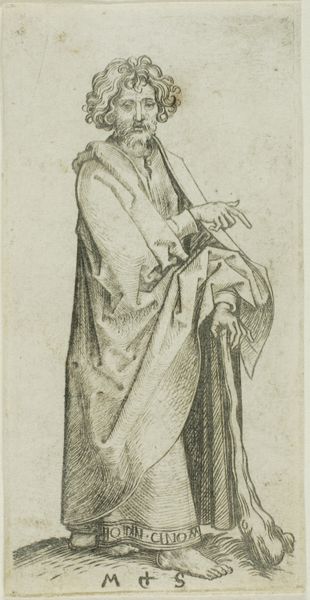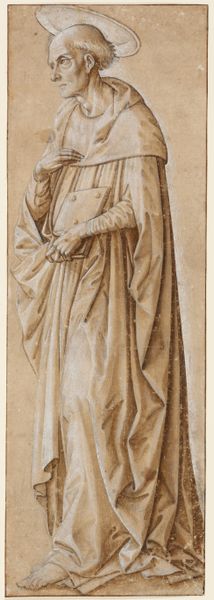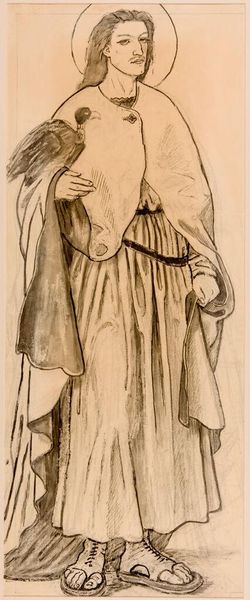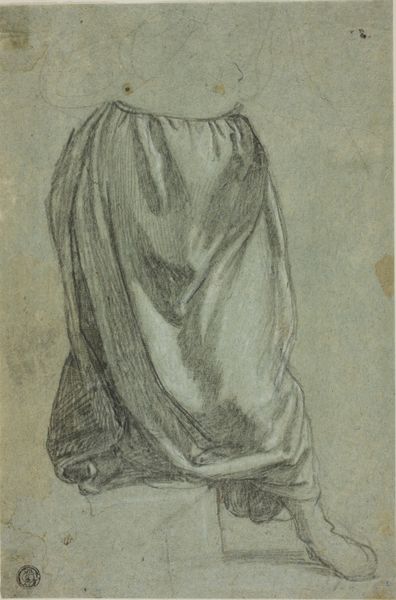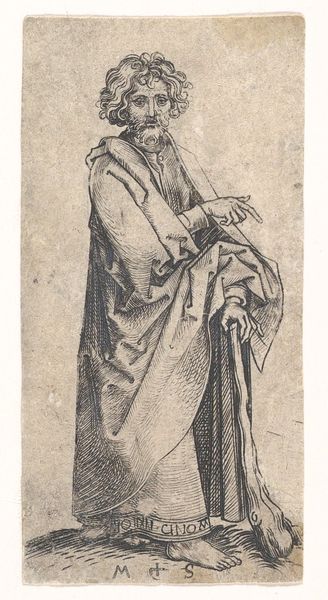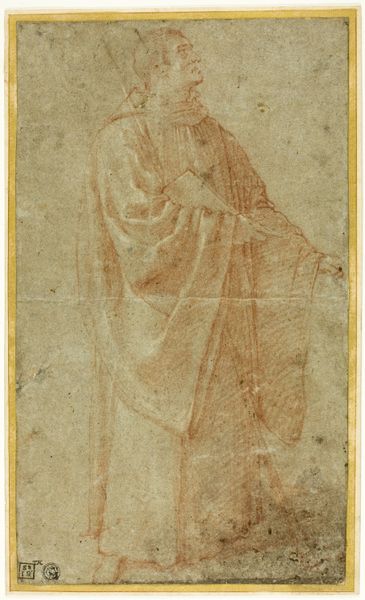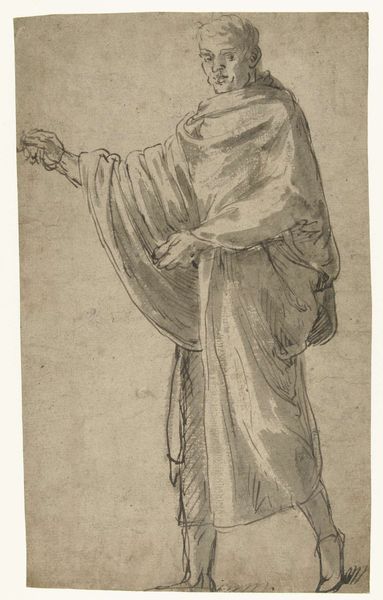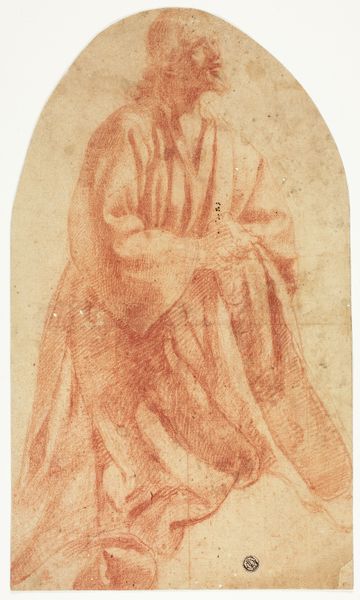
drawing, pencil
#
portrait
#
drawing
#
figuration
#
11_renaissance
#
pencil drawing
#
pencil
#
northern-renaissance
Copyright: Public domain
Editor: Here we have Albrecht Dürer’s "Portrait Donors," a pencil drawing from 1506. The draping of the robe really strikes me; it looks so soft, almost like silk. What do you see in this piece? Curator: The materiality is definitely key. Notice how Dürer’s skilled handling of pencil creates the illusion of opulent fabric. But let's consider the context of that material: who had access to such luxury? Who benefitted from its production? The 'Portrait Donors' highlights a system of patronage, where wealth literally funded artistic creation. Editor: So the image isn’t just about the individual portrayed but the economic structure supporting art? Curator: Exactly. It’s also vital to examine Dürer’s process. Drawings like this served multiple purposes. They were studies, practice, and commodities themselves. Pencil wasn't just a preparatory tool; it was a means of production, democratizing art-making by being more accessible and less labor-intensive than, say, painting in oil. Consider how that might challenge traditional hierarchies between 'high' art and 'craft.' Editor: That’s interesting; I hadn’t thought about the choice of pencil in that way, as a material with social implications. Curator: Precisely! And think about what the "donors" were paying for: not just a portrait, but social visibility, the perpetuation of their status. Art became a form of material capital, intertwined with their identity and influence. Editor: I see now that the image becomes a document about Renaissance commerce just as much as it captures likeness. Thanks, that perspective shifted everything for me! Curator: Glad to share, it always helps to dig below the surface.
Comments
No comments
Be the first to comment and join the conversation on the ultimate creative platform.
